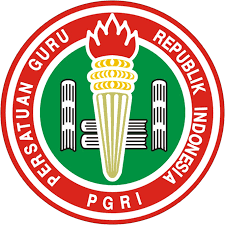EXPLORATION AND ANALYSIS OF MOCOAN LONTAR YUSUP IN KEMIREN VILLAGE A STUDY ON THE VALUES OF CHARACTER EDUCATION
Eksplorasi Dan Analisis Mocoan Lontar Yusup Di Desa Kemiren Studi Tentang Nilai-Nilai Pendidikan Karakter
DOI:
https://doi.org/10.36526/santhet.v8i2.4153Keywords:
Lontar Yusup, Character, Culture preservationAbstract
Lontar Yusup is an ancient manuscript that lives textually because it is still copied continuously in the form of handwriting and also lives Mocoan from the Javanese language which means reading. Therefore, some artists and the government of Banyuwangi Regency made a breakthrough in attracting the interest of the community and the younger generation to the cultural tradition of Mocoan Lontar Yusup by organising training for the younger generation. The purpose of this research is to be an important contribution to the development of effective cultural strategies, provide an understanding of the character values that exist in mocoan lontar, and ensure the continuity of a cultural heritage that is very valuable to the people of Banyuwangi. The form of this research is descriptive qualitative. The theory used is the theory of cultural inheritance by Edgar H. Schein. Data collection techniques used interviews, observations, and document studies. The results of the study show that the application of Schein's theory in cultural preservation carried out by the Kemiren community is how they are more selective about the times so that many outside developments can reduce the sense of concern for tradition, one of which is this mocoan lontar tradition. With the existence of the community and the creation of a schedule for reading the Yusup lontar manuscript, the theory conveyed by Schein is very appropriate in shaping the character of the osing community. Mocoan members after participating in mocoan activities experience spiritual improvement and character values and feel the impact or blessing
References
Alauidin. F, 2024. “Mocoan Lontar Yusup Milenial, Pewarisan Dan Ruang Dialog Antargenerasi”.Ppim UIN Jakarta
Estriana, Dwi Puji. 2017. “Sejarah Manuskrip Lontar Yusuf Sebagai Media Dakwah Masyarakat Osing Banyuwngi”. Skripsi. Semarang: Fakultas Agama Islam UNISSULA.
Indiarti, Wiwin. 2018. Lontar Suyup Banyuwangi: Teks Pegon-Transliterasi-Terjemah. Yogyakarta: Elmatera.
Indiarti, Wiwin, Suhailik & Anasrullah. 2019. Babat Tawangalun: Wiracarita Pangeran Blambangan dalam Unataian Tembang. Jakarta: Perpusnas Press.
Masrsono. 2011. “Akulturasi Penyebutan Konsepsi Tuhan pada Teks Sastra Suluk”. Jumantara, 2 (1): 1-23, doi: https//doi.org/10.37014/jumantara.v2i1.118.
Mega Yesi, 2010. “Nilai-nilai Moral dalam Tradisi Mocoan Lontar pada Suku Oseng di Desa Kemiren, Kecamatan Glagah, Kabupaten Banyuwangi. Universitas Negri Malang.
Koentjaraningrat, 2009. Pengantar Ilmu Antropologi. Jakarta: PT.Rineka Cipta.
Risqi. 2021. “Implementasi Mocoan Lontar Yusup Untuk Meningkatkan Spiritualitas Pemuda Desa Kemiren Banyuwangi. Skripsi. Jember.Universitas Jember.
Sugiyono, 2017. Metode Penelitian Kualitatif Untuk Penelitian yang Bersifat: Eksploratif, Enterpretif, Interaktif, dan Konstruktif. Bandung: ALFABETA.
Swatika, dkk. 2016. Dinamika Kesenian Topeng Kona di Desa Blimbing Kecamatan Klabang Kabupaten Bondowoso Tahun 1941-2014.Jurnal Vol. 51 (1): 104-117.
Yusuf, A. Muri. 2014. Metode Penelitian Kualitatif, Kualitatif, & Penelitian Gabungan (Cetakan ke 1). Jakarta: Kencana.





























